I’ve reached the halfway point of my time in Cusco, and I can’t believe how quickly my six weeks are passing by. I spend many mornings in a coffee shop with my friend Avery, and I’ve been able to explore more neighborhoods and areas surrounding the city center. This past week, I went to the zoo with my professor and classmates, where we put our conversations skills to test during the long walk, and fed the monkeys and parrots with crackers from our hands. This weekend, my friends and I hiked through the San Blas neighborhood to reach Cristo Blanco, a huge statue of Christ on a mountain overlooking Cusco. The steep walk was breathtaking, as was the view. I also ventured out to the San Pedro Market, where countless vendors line up to sell their food and souvenirs.

Studying in my favorite coffee shop, Cappuccino Cafe!



Pictures from our hike to Cristo Blanco. The view was incredible!
This past week, I also witnessed a major transportation strike throughout the city. No buses were running, and very few taxis and other cars were in the streets. My host sisters’ schools were cancelled, and many people did not attend work. As I walked to classes during the strike, people walked through the streets yelling and holding signs, and a more organized march down the main avenue occurred later in the afternoon.
Thanks to a safety app I was required by ND to download on my phone before traveling abroad, I knew that the strike was happening on this day, but I wasn’t exactly sure what to expect. I was able to ask two of my Spanish professors and one of my host sisters about their thoughts concerning the strike, and got some more information. One professor, Vanessa, explained that the strike was for a combination of demands. Bus drivers want higher salaries, gas prices in Cusco are too expensive, among other things. She talked about the frequency of strikes in Cusco–something I’ve noticed during my 3 weeks here, though this was the largest one I’ve seen–but how they always fall on weekdays in the afternoon, so her job prohibits her from participating. Vanessa also told us about a strike that occurred a few years ago, after the government poisoned a great number of dogs that live on the streets in Cusco. This particularly bothered her, and she wishes she had been able to march. Vanessa asked us about strikes or protests we’ve participated in in the US, and we talked about women’s rights and gun reform.
I asked my private lesson professor, Nely, about the strike as well. She immediately jumped from transportation to talking about healthcare and a hospital in Cusco. Nely explained that the strike was also to protest the delay in building a new hospital in Cusco. Apparently, people at the top of the project management have been pocketing the money, and the hospital has not been completed in over 7 years. Nely, along with many others, are extremely frustrated with the corruption and delay, as well as with the state of healthcare in Cusco as a whole. It costs exorbitant amounts of money to see a doctor or a specialist, and not everyone is Cusco is afforded healthcare. I also asked my host sister about the strike, but she was merely happy to skip school. Her dad, however, made sure that she watched the news the morning of the strike to learn more.
While it felt incredibly unusual to see empty streets and people away from work in Cusco, I was inspired by the capacity of Cusqueños to come together for a common cause, or causes. Time will tell if this strike or others will bring change to the protestor’s demands, but I am anxious to follow along.
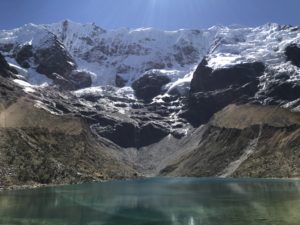
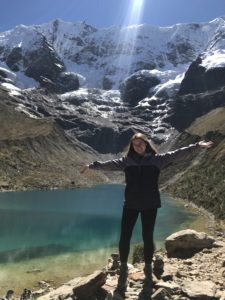
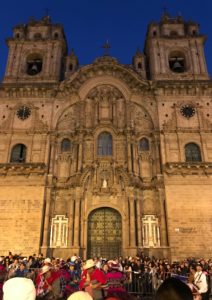
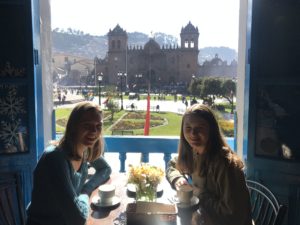
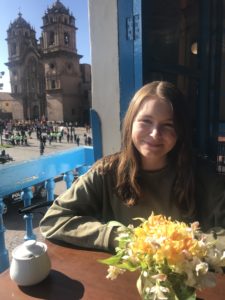










 The train ride to Aguas Calientes was beautiful!
The train ride to Aguas Calientes was beautiful! A river runs through the center of the town, with many restaurants and hostels on either side.
A river runs through the center of the town, with many restaurants and hostels on either side.

 Guido was eager to give me a nighttime tour of the city!
Guido was eager to give me a nighttime tour of the city!



